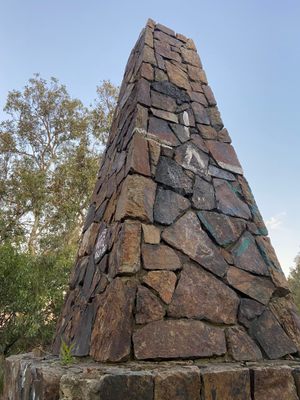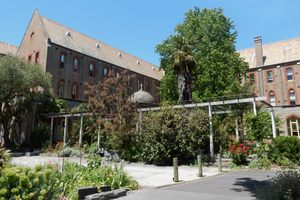About
This obelisk-shaped cairn commemorates the 1803 expedition of English surveyor Charles Grimes. Hidden off the road among eucalyptus trees, it's a symbol of early European settlement along Melbourne's Yarra River and the surrounding area.
In February 1803, Grimes came across the mouth of the Yarra River, known at the time as the Freshwater River, and organized a boat trip to explore where it led. The progress of their journey was halted by Dights Falls, a water feature consisting of rapids and a weir. The Wurundjeri people had long used Dights Falls as a fishing spot and meeting point between local Aboriginal groups to settle disputes.
It wasn't until 1835 that settlers returned to the Yarra. That year, Australian explorer John Batman arrived and found, according to his journal, "the place for a village." He dubbed it Batmania. It's now known as Melbourne.
The Charles Grimes Expedition Cairn, unveiled in 1938, is made of shale from the Yarra River bed. A plaque dedicates the monument to "the first white men to discover the River Yarra." The cairn recognizes a major shift in the occupation of the land and the major industrial and agricultural changes which came after more European settlers followed the journey which Grimes had first made.
Related Tags
Know Before You Go
The road leading to the cairn is closed to cars but there are plenty of parking spaces around the Yarra Bend Park. There's also a great view of Melbourne.
Published
August 17, 2022


































